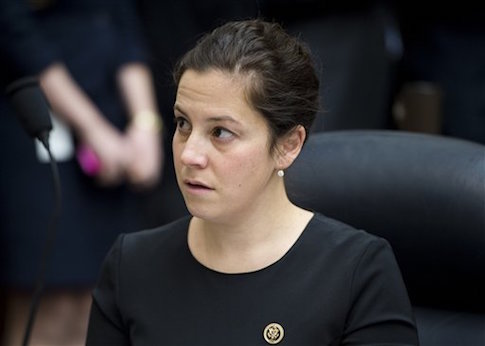At Harvard, Elise Stefanik, now the youngest woman ever elected to Congress, was a member of a rare minority group. She was a conservative.
Growing up in a small business family that faced constant challenges from taxes and red tape helped form Stefanik’s political principles. Being a member of such an intellectual minority while a student at Harvard tested her on why she stood for the principles that she did. She says it also taught her to listen to the other side.
"It’s not that I graduated from Harvard that I’m most proud of, it’s that I graduated Harvard and stayed a Republican and a Yankee fan," she says.
Stefanik’s parents were not political and did not have the opportunity to graduate from college, but taught Elise the hard work it takes to run a business. "Nothing replaces having a strong work ethic in whatever you do. And having an idea or passion about an issue. That’s the message for anybody, not just women, but for anybody."
It has been a little over one hundred days since Stefanik was sworn into office. She prefers to be known as Elise, which most of her constituents call her when she travels back to the 21st New York district.
"That was my campaign slogan. Instead of Stefanik for Congress, I chose Elise for Congress because I wanted people to see that I want to be something different," she said.
Stefanik describes herself as a "motivated and high-energy person," and her first term in Congress will test that assertion. Between studying proposed legislation, attending committee hearings, meeting with constituents and with the media, and traveling back and forth to the large North Country for events, her schedule is packed, perhaps even more so than it was during an earlier career in Washington, during which she worked at the White House, at the Foreign Policy Initiative, and at one point helped Paul Ryan prepare for his 2012 debate with Joe Biden.
According to Stefanik, being young and female in Congress is not a setback, but a strength.
"Some of the older members of Congress who are great and they want to engage on social media, they actually have come to me on the House Floor and said, ‘Who does your social media?’ They’re sort of disappointed when they find out I do it because they’re not as nimble using social media, but because I am of that generation it comes more naturally."
Stefanik posts all of her votes on Facebook and aims to use her social media sites as a tool to connect voters to the policymaking process in Washington. She interacts informally with her followers on Instagram when they leave comments on the latest book she’s reading, the dress she’s wearing, or a meal she prepared. Several followers have commented that she is their inspiration, a title not many members of Congress have bestowed on them these days, especially from younger voters.
The most challenging part of the job for Stefanik has been managing the large number and remarkable variety of issues that come across her desk. As a way of keeping the focus on her constituents, and as a useful conversation piece for visitors, she has a large hand-drawn chalkboard mural on her wall depicting all of the important aspects of New York’s geography.
The main priority since getting elected has been advocating for Fort Drum, the home of the most deployed unit in the U.S Army—the 10th Mountain Division—since September 11th, 2001, and the largest economic driver in Northern New York.
As a freshman member of the House Armed Services Committee, and vice-chair for the Subcommittee on Readiness, Stefanik is critical of the budget sequester and its negative effects on her region, as well as its consequences for all troops’ preparedness "in a dangerous world."
There was bipartisan consensus to be found when it comes to protecting Fort Drum from budget cuts. Stefanik spearheaded a letter to the Pentagon about the importance of the base, signed by the two New York senators, and every member of the New York delegation, after working the House floor and reaching out to her Democratic colleagues.
She then hosted a listening session at Fort Drum with officials from the Pentagon and three other upstate New York members of Congress. This was the "first time Fort Drum had seen that kind of support in recent memory," she said.
Stefanik embraces being a role model for young people and said she was humbled during the campaign when families from all political beliefs and background brought their daughters to see Elise speak. They wanted to give their children someone to look up to as an example of women’s empowerment.
Stefanik says she will continue to advocate for the Republican Party to nominate "more female candidates to push back on the economic war on women that this administration has been waging. … I don’t believe in the ‘War on Women,’ and am working to be a positive role model to talk about how all policies affect women."
Stefanik has also signed on as a co-sponsor of the Family Farm Relief Act of 2015 and led a bipartisan effort to urge Speaker John Boehner to fast track consideration of the Protect Medical Innovation Act, which would repeal the Affordable Care Act’s medical device tax.
Stefanik’s general support for women in politics does not extend to Hillary Clinton’s presidential campaign. "We need to elect the strongest candidate, the strongest Commander in Chief, the person who has the best vision for economic growth for our country, and what a forward leaning 21st century economy should look like with the greatest amount of opportunity for all Americans," she says.
"I think we have a tremendously talented Republican field."
